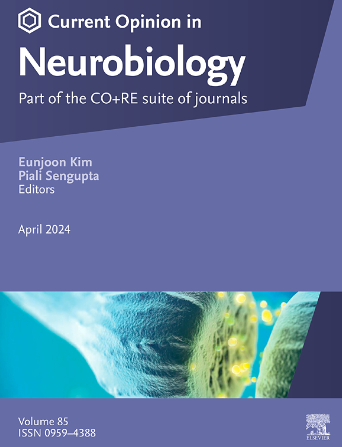兴奋性/抑制性失衡是自闭症和睡眠问题之间的联系机制。
IF 4.8
2区 医学
Q1 NEUROSCIENCES
引用次数: 0
摘要
与正常发育的个体相比,自闭症谱系障碍(ASD)患者出现睡眠问题的频率更高,最近的研究支持自闭症谱系障碍和睡眠障碍之间存在遗传联系。然而,睡眠问题与ASD表型之间的机制联系尚不清楚。一个长期存在的假设认为,大脑中兴奋性和抑制性(E/I)信号之间的不平衡是ASD行为特征的基础。近年来,新出现的证据表明,在野生型动物模型中,E/I比率的调节与睡眠/清醒状态有关。在这篇综述中,我们将探讨在睡眠/觉醒周期中改变的E/I调节作为ASD中连接睡眠中断和行为表型的机制。本文章由计算机程序翻译,如有差异,请以英文原文为准。
Excitatory/Inhibitory imbalance as a mechanism linking autism and sleep problems
Sleep problems occur more frequently in individuals with autism spectrum disorder (ASD) than in typically developing individuals, and recent studies support a genetic link between ASD and sleep disturbances. However, it remains unclear how sleep problems may be mechanistically connected to ASD phenotypes. A longstanding hypothesis posits that an imbalance between excitatory and inhibitory (E/I) signaling in the brain underlies the behavioral characteristics of ASD. In recent years, emerging evidence has shown that regulation of the E/I ratio is coupled to sleep/wake states in wild-type animal models. In this review, we will explore the idea of altered E/I regulation over the sleep/wake cycle as a mechanism bridging sleep disruption and behavioral phenotypes in ASD.
求助全文
通过发布文献求助,成功后即可免费获取论文全文。
去求助
来源期刊

Current Opinion in Neurobiology
医学-神经科学
CiteScore
11.10
自引率
1.80%
发文量
130
审稿时长
4-8 weeks
期刊介绍:
Current Opinion in Neurobiology publishes short annotated reviews by leading experts on recent developments in the field of neurobiology. These experts write short reviews describing recent discoveries in this field (in the past 2-5 years), as well as highlighting select individual papers of particular significance.
The journal is thus an important resource allowing researchers and educators to quickly gain an overview and rich understanding of complex and current issues in the field of Neurobiology. The journal takes a unique and valuable approach in focusing each special issue around a topic of scientific and/or societal interest, and then bringing together leading international experts studying that topic, embracing diverse methodologies and perspectives.
Journal Content: The journal consists of 6 issues per year, covering 8 recurring topics every other year in the following categories:
-Neurobiology of Disease-
Neurobiology of Behavior-
Cellular Neuroscience-
Systems Neuroscience-
Developmental Neuroscience-
Neurobiology of Learning and Plasticity-
Molecular Neuroscience-
Computational Neuroscience
 求助内容:
求助内容: 应助结果提醒方式:
应助结果提醒方式:


